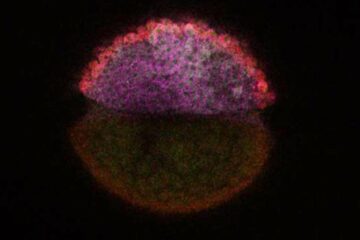Our energy system can be based on renewable energy

For two days 160 scientists, businesspeople and government officers have been working to answer the question: What is the fastest way to an energy system with much less CO2 emissions? The first step is to integrate an interconnected intelligent power grid in Europe.
Denmark can become independent of fossil fuels by implementing efficiency improvements in all sectors including power stations, houses, industry and transport. At the same time, the share of renewable energy must be increased with more wind energy and increased use of biomass. In the transport sector we can replace fossil fuels with biofuels and we can also use electric cars which can be integrated into the power grid. The obstacle is the development of better batteries. Such a radical transformation of the energy system takes time. Accordingly, decisions and action are needed now. The transformation requires:
An interconnected intelligent power grid, integrated on a European level and able to store a higher level of renewable energy.
More research funds for new energy technologies and systems. We can achieve much with known technologies in the short term, but there is a need for research into new energy technologies and systems to enter the market after 2050.
Definite framework conditions and directives from the authorities. The energy sector needs this before beginning on huge investments in connection with a significant transformation of the energy system. For instance: instruments to promote the development of intelligent energy systems and stricter requirements for energy-using equipment, housing energy consumption, transport, etc. Such a development provides the Danish energy sector with great expansion opportunities on the international energy market.
Carbon capture and storage in power plants and energy-consuming industries seem to be necessary until we are able to phase out fossil fuels.
At the global level, all known sustainable energy technologies must be used in order to control CO2 emissions. The solutions are quite different in various regions of the world. In countries with rapidly growing developing economies like India and China it is obvious to expand with the best technologies, but it takes extensive international cooperation. In the world's least developed countries there is a need for providing modern clean energy and electricity to everyone. Here the world's major economies should help transfer clean energy technologies, based on both fossil fuels and renewable energy.
Media Contact
More Information:
http://www.risoe.dtu.dk/All latest news from the category: Power and Electrical Engineering
This topic covers issues related to energy generation, conversion, transportation and consumption and how the industry is addressing the challenge of energy efficiency in general.
innovations-report provides in-depth and informative reports and articles on subjects ranging from wind energy, fuel cell technology, solar energy, geothermal energy, petroleum, gas, nuclear engineering, alternative energy and energy efficiency to fusion, hydrogen and superconductor technologies.
Newest articles

Attosecond core-level spectroscopy reveals real-time molecular dynamics
Chemical reactions are complex mechanisms. Many different dynamical processes are involved, affecting both the electrons and the nucleus of the present atoms. Very often the strongly coupled electron and nuclear…

Columbia researchers “unzip” 2D materials with lasers
The new technique can modify the nanostructure of bulk and 2D crystals without a cleanroom or expensive etching equipment. In a new paper published on May 1 in the journal…

Decoding development: mRNA’s role in embryo formation
A new study at Hebrew University reveals insights into mRNA regulation during embryonic development. The study combines single-cell RNA-Seq and metabolic labeling in zebrafish embryos, distinguishing between newly-transcribed and pre-existing…





















